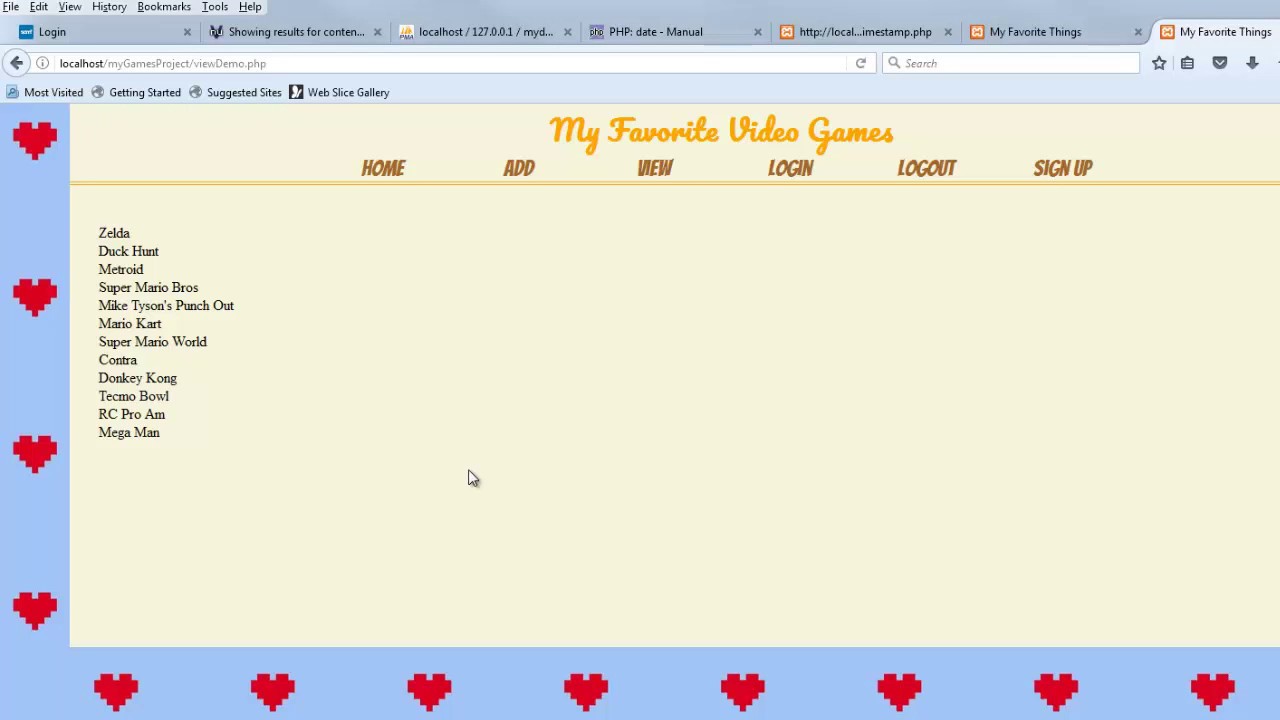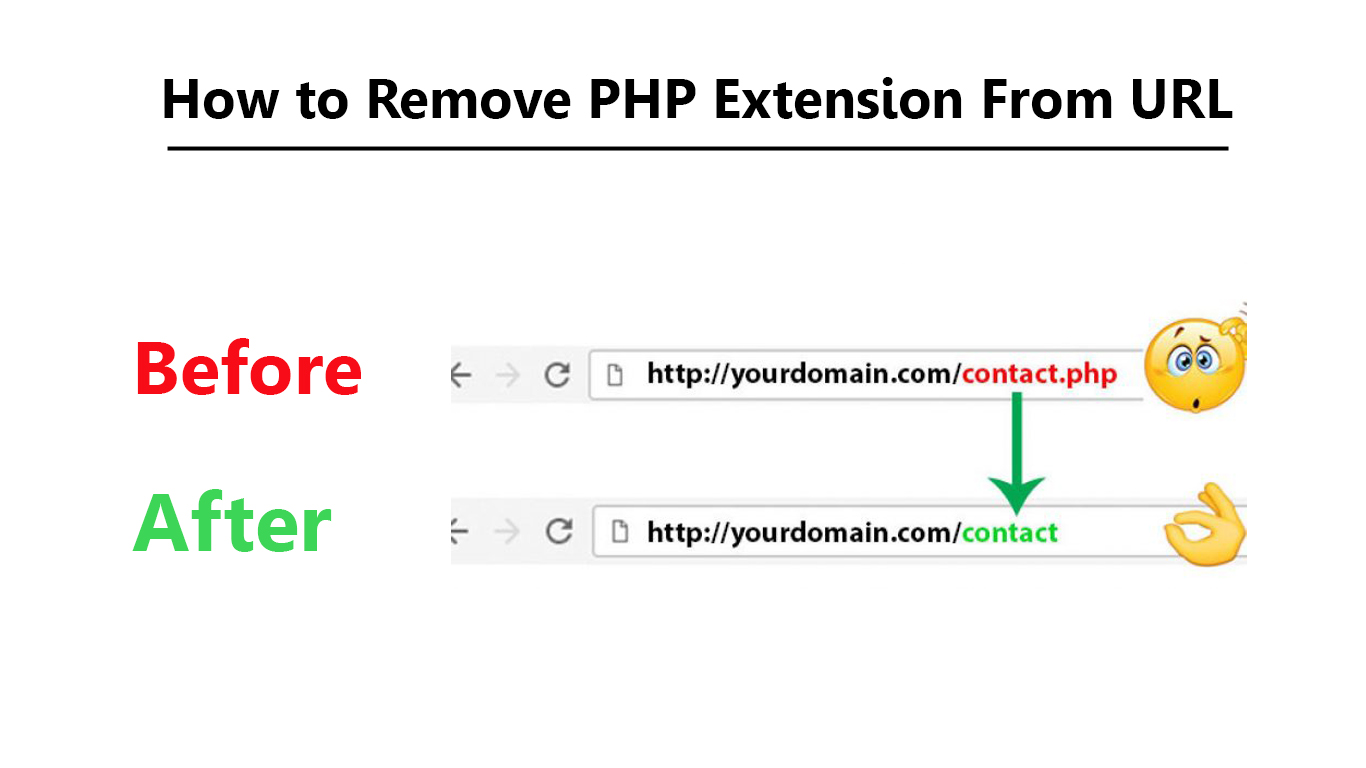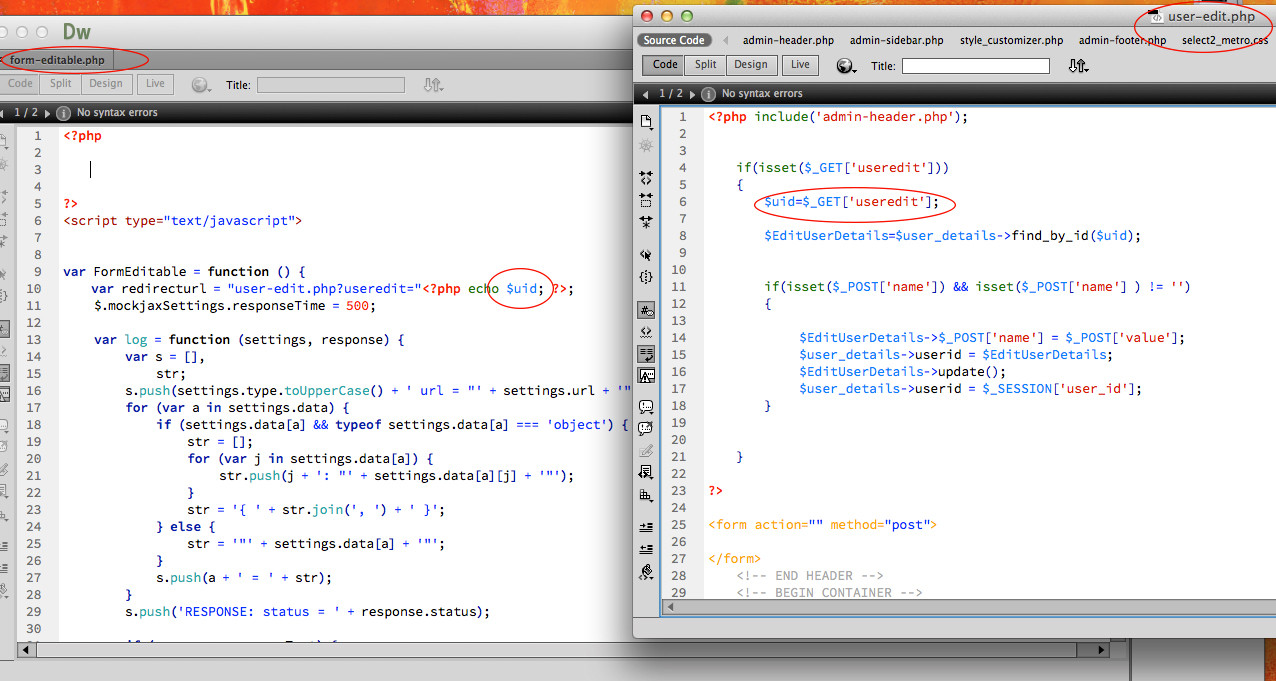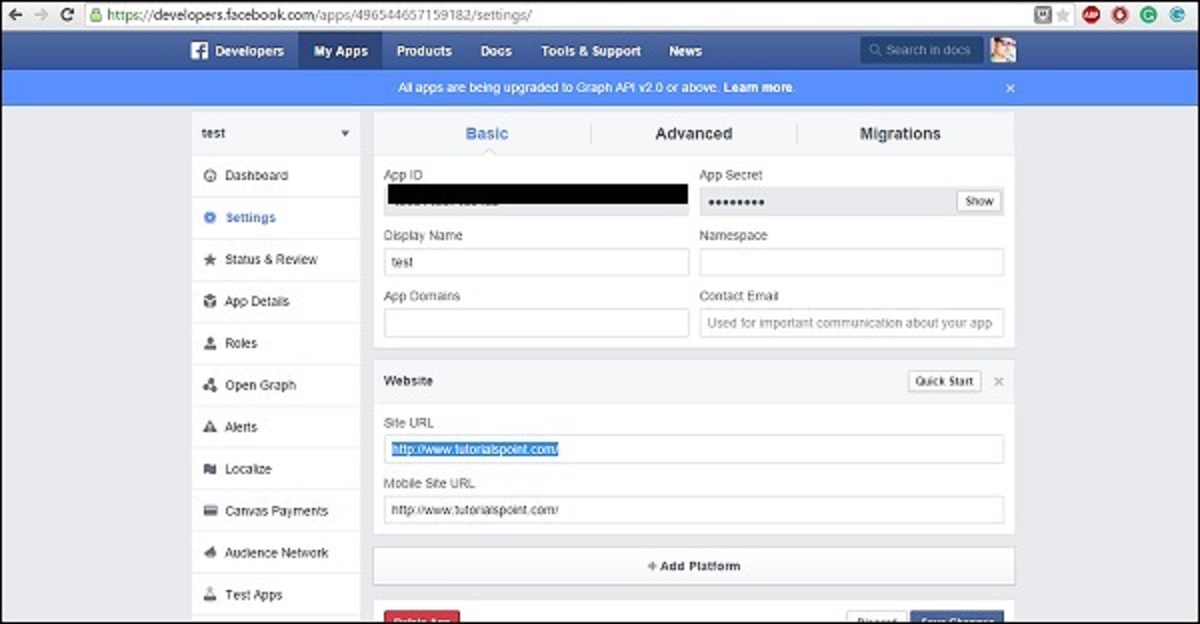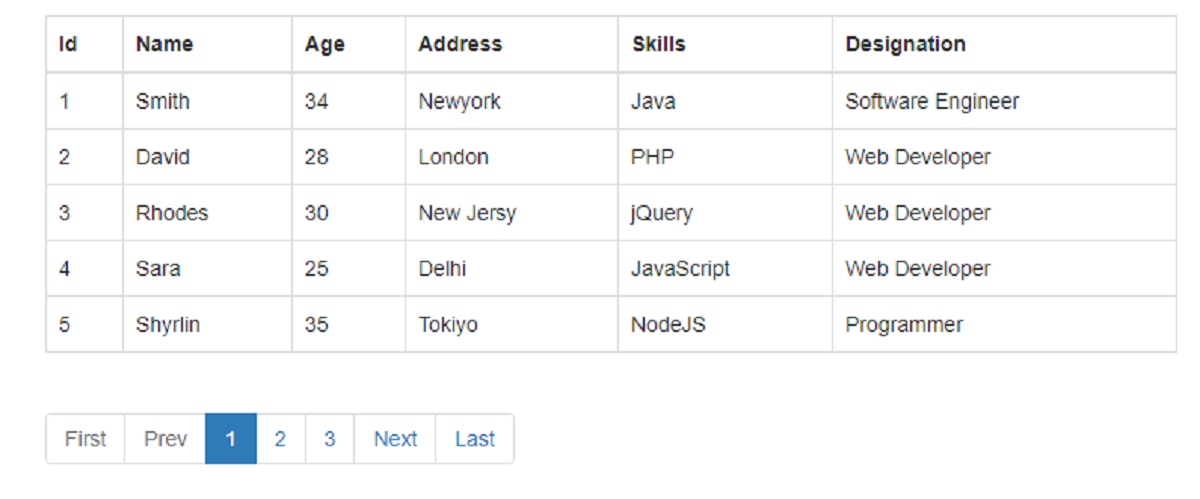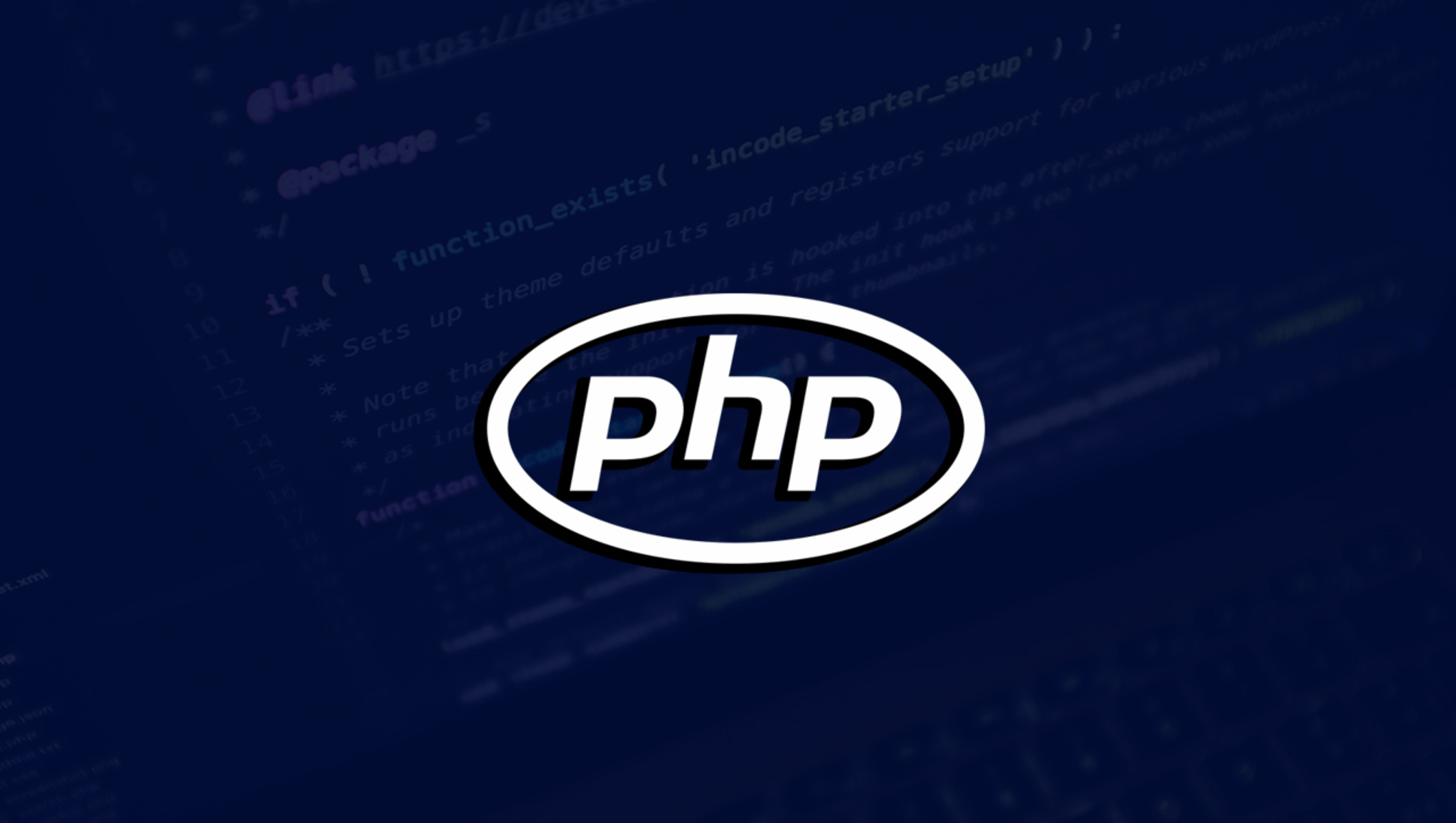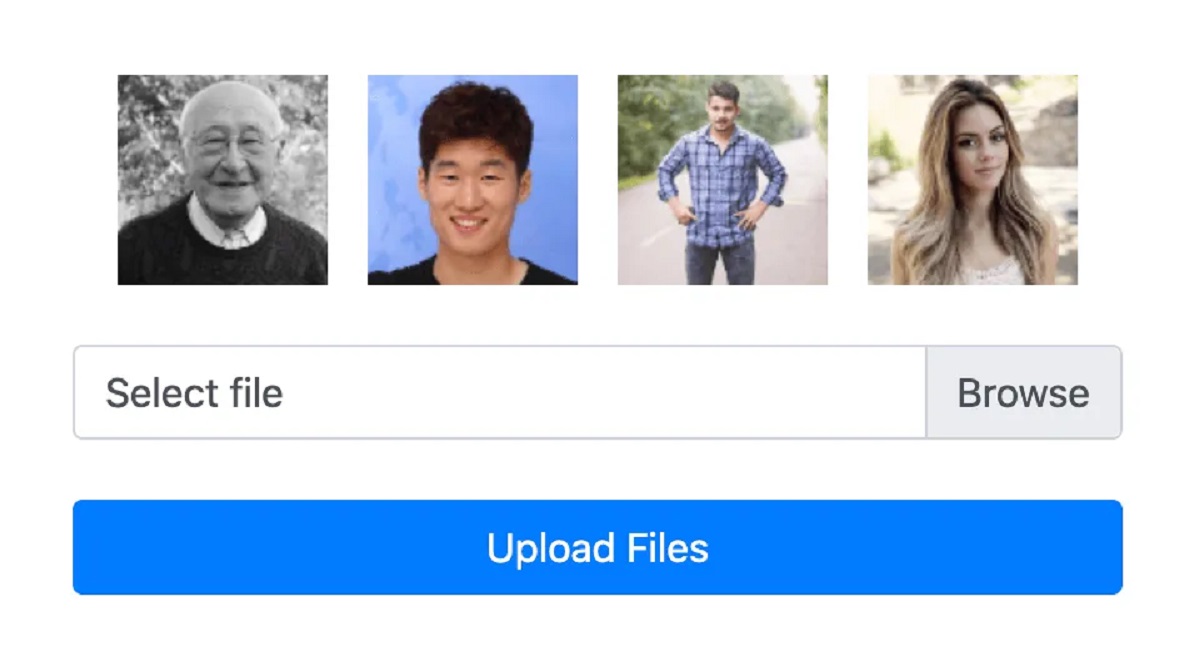Introduction
Welcome to the world of web development! In today’s digital age, creating dynamic and interactive websites has become a necessity. One of the essential aspects of web development is working with URLs. URLs, or Uniform Resource Locators, serve as the address to access web pages. While static URLs are straightforward and easy to understand, dynamic URLs provide a more flexible and customizable solution.
In this article, we will explore the concept of dynamic URLs and how we can create them using PHP, a popular scripting language widely used for web development. Dynamic URLs allow us to pass parameters or values in the URL itself, making the website more interactive and personalized for each user.
So why would you want to use dynamic URLs in PHP? Well, dynamic URLs offer a range of benefits. Firstly, they allow us to create dynamic content that can be generated on the fly based on user input or database values. This adds a layer of interactivity to the website and enhances the user experience. Additionally, dynamic URLs are often optimized for search engines, making it easier for users to find specific pages on the website.
In this article, we will walk through the step-by-step process of creating dynamic URLs in PHP. We will cover various aspects such as defining the URL structure, setting up the .htaccess file, handling dynamic URLs in PHP, and retrieving and using the dynamic URL parameters. We will also touch upon working with dynamic URLs in databases.
Whether you are a beginner in PHP or an experienced developer looking to expand your skills, this article will provide you with the knowledge and tools necessary to create dynamic URLs in PHP. So let’s dive in and unlock the power of dynamic URLs for your web development projects!
What is a dynamic URL?
A dynamic URL is a type of URL that includes parameters or variables within the URL itself. Unlike a static URL, which has a fixed structure and does not change, a dynamic URL allows for customization and personalization based on user input or system data. The parameters passed in the dynamic URL can be used to dynamically generate content, perform specific actions, or retrieve data from a database.
In a dynamic URL, the parameters are typically separated from the base URL using special characters such as question marks (?) and ampersands (&). For example, let’s say we have a website that displays product details. A static URL for a specific product page might look like this:
https://example.com/product-page
However, with a dynamic URL, we can include parameters to specify the product ID or other information:
https://example.com/product-page?id=123
In this example, the “id” parameter is included in the URL to indicate which specific product page should be displayed. The value “123” represents the product ID, which can be dynamically retrieved and used to generate the content for that specific product.
Dynamic URLs are commonly used in various web applications, such as e-commerce websites, news portals, and social media platforms. They allow for customized and personalized experiences by tailoring the content based on user preferences or system data. For example, a dynamic URL in an e-commerce website might include parameters like product IDs, category filters, sorting options, and user preferences to display relevant products to the user.
The use of dynamic URLs offers several advantages. Firstly, it improves the user experience by providing dynamic and interactive content. By passing parameters in the URL, the website can generate personalized content for each user, enhancing engagement and satisfaction. Dynamic URLs also enable better search engine optimization (SEO) as they allow search engine crawlers to understand the structure and context of the page better.
In the next section, we will dive into the steps involved in creating dynamic URLs in PHP. We will explore how to define the URL structure, set up the necessary files, handle the dynamic URLs in the PHP code, and retrieve and use the parameters passed in the URL.
Why use dynamic URLs in PHP?
Dynamic URLs offer a range of advantages that make them an essential tool in web development, especially when working with PHP. Let’s explore some of the key reasons why dynamic URLs are widely used in PHP-based applications.
1. Customization and personalization: Dynamic URLs allow for customization and personalization of web content. By passing parameters in the URL, PHP can dynamically generate content based on user input, preferences, or system data. This enables websites to provide a tailored experience to each user, enhancing engagement and satisfaction.
2. Enhanced interactivity: Dynamic URLs enable interactive features on websites. By including parameters in the URL, PHP can perform specific actions or retrieve data from databases. For example, a dynamic URL can trigger the display of a specific product, execute a search query, or perform other dynamic operations, making the website more dynamic and engaging.
3. Search engine optimization (SEO): Dynamic URLs are often more SEO-friendly than static URLs. With dynamic URLs, you can include keywords and relevant information in the URL that can help search engine crawlers understand the context of the web page better. This can improve the website’s visibility in search engine rankings and drive organic traffic.
4. Scalability and flexibility: Dynamic URLs provide flexibility and scalability when it comes to website management and updates. With dynamic URLs, you can easily modify and update the parameters to accommodate changing content, user preferences, or system requirements. This makes it easier to scale the website and adapt it to evolving needs without requiring extensive code modifications.
5. Analytics and tracking: Dynamic URLs are often used for tracking purposes and gathering analytics data. By including unique identifiers or campaign parameters in the URL, PHP can track user interactions, monitor marketing campaigns, and measure the effectiveness of different website elements. This data can provide valuable insights for website optimization and marketing strategies.
6. Integration with databases and APIs: Dynamic URLs play a crucial role in integrating PHP applications with databases and external APIs. By passing parameters in the URL, PHP can retrieve data from databases, perform complex queries, and interact with external services. This enables seamless data integration and enhances the functionality of the website.
Overall, dynamic URLs in PHP offer tremendous flexibility, customization, and interactivity for web applications. By incorporating dynamic URLs into your PHP projects, you can create dynamic and personalized websites that drive user engagement, improve SEO, and provide valuable insights for optimization. Now that we understand the benefits of dynamic URLs in PHP let’s move on to the step-by-step process of creating them.
Steps to Create a Dynamic URL in PHP
Creating a dynamic URL in PHP involves a few essential steps. Let’s go through them one by one to understand how to implement dynamic URLs effectively.
Step 1: Define the URL structure: The first step is to define the structure of your dynamic URL. Determine what parameters you want to include in the URL and how they will be organized. For example, if you want to create a dynamic URL for a product page, you might include parameters like product ID or category. Plan out the URL structure to ensure it aligns with your application’s requirements.
Step 2: Set up the .htaccess file: The .htaccess file is crucial for handling dynamic URLs in PHP. It allows you to rewrite the URLs and map them to the appropriate PHP script. Configure the .htaccess file to enable URL rewriting and ensure that it redirects requests to your PHP script that will handle the dynamic URL parameters.
Step 3: Handle the dynamic URL in PHP: In your PHP script, you need to handle the dynamic URL and extract the parameters. To do this, you can use the $_GET or $_REQUEST superglobal variable to retrieve the values passed in the URL. For example, if the URL is “https://example.com/product-page?id=123”, you can get the value of the “id” parameter using $_GET[‘id’]. Process the parameters as needed in your PHP code.
Step 4: Retrieve and use the dynamic URL parameters: Once you have retrieved the dynamic URL parameters in your PHP code, you can use them to generate dynamic content or perform specific actions. For example, if you have the product ID parameter, you can fetch the corresponding product details from a database and display them on the page. Utilize the parameters to customize the user experience and provide relevant information.
Step 5: Working with dynamic URLs in databases: If you need to store and manage dynamic URLs in a database, ensure that you design the database schema appropriately. Create a table to store the dynamic URL parameters as well as any additional information needed. Set up the necessary database queries to fetch and update the dynamic URLs as required.
By following these steps, you can create effective and functional dynamic URLs in PHP. Remember to test and validate your implementation to ensure that the dynamic URL handling works correctly and provides the desired functionality.
In the next section, we will explore each step in more detail, providing code examples and guidance on how to implement dynamic URLs effectively in PHP.
Step 1: Define the URL structure
The first step in creating a dynamic URL in PHP is to define the URL structure. This involves determining what parameters you want to include in the URL and how they will be organized. By defining the URL structure, you establish the foundation for passing dynamic values in the URL.
When defining the URL structure, consider the specific requirements of your application. Think about the information you want to pass as parameters and how you want to organize it. For example, if you are building an e-commerce website, you might want to include parameters like product ID, category, and sorting options in the URL.
To define the URL structure, you can use user-friendly URL segments separated by slashes (/) or query parameters separated by question marks (?) and ampersands (&). User-friendly URL segments are typically more aesthetically pleasing and easier for users to understand, while query parameters offer more flexibility and can handle a larger number of parameters.
For example, let’s say you want to create a URL structure for a product page that includes the product ID as a parameter. You could define the URL structure as follows:
https://example.com/product/{product-id}
In this example, the {product-id} placeholder represents the product ID parameter. When a user visits a product page, the actual product ID will be dynamically substituted in the URL.
If you prefer to use query parameters, you could define the URL structure in this format:
https://example.com/product?id={product-id}
In this case, the product ID parameter is passed as a query parameter named “id”.
Choose a URL structure that makes sense for your application and aligns with your development approach. Keep in mind that a well-defined URL structure not only helps users understand the purpose of the page but also aids in search engine optimization and improves the overall user experience.
In the subsequent steps, we will explore how to implement and handle the dynamic URLs in PHP based on the defined URL structure. We will cover topics such as setting up the .htaccess file, handling the dynamic URL in PHP, retrieving and using the dynamic URL parameters, and working with dynamic URLs in databases.
Step 2: Set up the .htaccess file
Setting up the .htaccess file is an essential step in creating and handling dynamic URLs in PHP. The .htaccess file allows you to rewrite the URLs, redirecting them to the appropriate PHP script that will handle the dynamic URL parameters.
To begin, you need to create a file named “.htaccess” in the root directory of your website if it doesn’t already exist. Make sure that your text editor does not add any file extension to the file, as it should be simply “.htaccess”.
In the .htaccess file, you will use mod_rewrite, a powerful Apache module, to enable URL rewriting. This module allows you to define rules that rewrite the URLs based on specific patterns and redirects them to your PHP script.
Here is an example of a basic .htaccess configuration for handling dynamic URLs:
RewriteEngine On
RewriteRule ^product/([a-zA-Z0-9]+)$ product.php?id=$1 [NC,L]
In this example, we are rewriting the URL pattern “^product/([a-zA-Z0-9]+)$” to “product.php?id=$1”.
The pattern “^product/([a-zA-Z0-9]+)$” matches the URL segment “product/” followed by one or more alphanumeric characters. The parentheses capture the alphanumeric characters as a parameter, which is then passed to the PHP script using the $1 placeholder.
The [NC,L] flags at the end of the RewriteRule specify that the rule is case-insensitive (NC) and that it’s the last rule to be processed (L).
Save the .htaccess file and upload it to the root directory of your website. Ensure that your web server supports the mod_rewrite module, as some hosting providers may have it disabled by default.
Once the .htaccess file is set up and in place, any requests that match the defined URL pattern will be redirected to the corresponding PHP script. The PHP script can then handle the dynamic URL parameters and generate the appropriate content based on the values passed in the URL.
In the upcoming steps, we will delve into how to handle the dynamic URL in PHP, retrieve and use the dynamic URL parameters, and work with dynamic URLs in databases. These steps will enable you to create robust and functional dynamic URLs in your PHP applications.
Step 3: Handle the dynamic URL in PHP
After setting up the .htaccess file to handle dynamic URLs, the next step is to handle these URLs in PHP. This step involves retrieving the dynamic URL parameters and processing them to generate the desired content or perform specific actions.
To handle the dynamic URL in PHP, you can use the $_GET or $_REQUEST superglobal variable to retrieve the values passed in the URL.
For example, if you have a dynamic URL like https://example.com/product?id=123, you can access the value of the “id” parameter using $_GET['id'] or $_REQUEST['id']. Here’s an example:
$productId = $_GET['id'];
echo "Product ID: " . $productId;
In this example, the value of the “id” parameter is assigned to the $productId variable. You can then use this value to perform database queries, retrieve specific product information, or generate dynamic content based on the ID.
It is important to sanitize and validate the dynamic URL parameters to ensure the security and integrity of your application. You can use functions like filter_var() or htmlspecialchars() to sanitize the values and prevent any potential security vulnerabilities.
Handling the dynamic URL in PHP gives you the flexibility to customize and personalize the content based on the values passed in the URL. You can create dynamic pages, display specific information, or perform different operations depending on the parameters present in the URL.
In the next step, we will explore how to retrieve and use the dynamic URL parameters to further enhance the functionality of your PHP application. We will discuss techniques for accessing the parameters and demonstrate how to integrate them with your PHP code to generate dynamic content.
Step 4: Retrieve and Use the Dynamic URL Parameters
Once you have handled the dynamic URL in PHP by retrieving the parameters, you can proceed to use them to generate dynamic content or perform specific actions within your application. This step involves retrieving the dynamic URL parameters and utilizing them to customize the behavior of your PHP code.
After accessing the parameters using $_GET or $_REQUEST superglobal variable, you can assign them to variables for easier use in your PHP code. Here’s an example:
$productId = $_GET['id'];
$category = $_GET['category'];
// Use the parameters in your PHP code
echo "Product ID: " . $productId;
echo "Category: " . $category;
In this example, the values of the “id” and “category” parameters are assigned to variables $productId and $category respectively. You can then use these variables to perform database queries, retrieve specific information, or generate dynamic content based on the parameters.
Using the retrieved dynamic URL parameters, you can customize the behavior of your PHP code. For instance, you can fetch product details from a database using the product ID, filter content based on the category, or implement different functionalities based on the values passed in the URL.
Remember to validate and sanitize the dynamic URL parameters before using them in your PHP code. This helps prevent malicious attacks such as SQL injection or cross-site scripting (XSS). Utilize PHP functions like filter_var() or htmlspecialchars() to sanitize and validate the values.
By retrieving and making use of the dynamic URL parameters in your PHP application, you can create personalized experiences for your users, display specific information based on their input, and enhance the functionality of your web application.
In the next step, we will explore working with dynamic URLs in databases. We will cover techniques for integrating dynamic URLs into database operations, such as retrieving or updating data based on the parameters passed in the URL.
Step 5: Working with Dynamic URLs in Databases
Working with dynamic URLs in databases allows you to integrate dynamic parameters into your database operations and retrieve or update data based on the values passed in the URL. This step involves connecting and interacting with your database to fetch or modify data dynamically.
Once you have retrieved the dynamic URL parameters in your PHP code, you can use them to query your database and retrieve specific data. For example, if you have a product ID parameter, you can execute a SQL query to select the corresponding product from the database:
$productId = $_GET['id'];
// Connect to the database
$connection = mysqli_connect('localhost', 'username', 'password', 'database');
// Prepare the SQL query
$query = "SELECT * FROM products WHERE id = '$productId'";
// Execute the query and retrieve the data
$result = mysqli_query($connection, $query);
$product = mysqli_fetch_assoc($result);
// Display the retrieved data
echo "Product Name: " . $product['name'];
echo "Price: " . $product['price'];
// ... and so on
In this example, we assume you’re using MySQLi extension to interact with the database. The product ID parameter is used in the SQL query to fetch the specific product details from the database. Once the data is retrieved, you can display it or perform further operations as needed.
If you need to update data based on the dynamic URL parameters, you can use a similar approach. Simply use the parameters as conditions in an SQL query to update the relevant records in the database.
Remember to validate and sanitize the dynamic URL parameters before using them in database operations to prevent security vulnerabilities. Utilize PHP functions like mysqli_real_escape_string() or prepared statements to safeguard against SQL injection attacks.
Working with dynamic URLs in databases allows for more advanced functionality in your web application. You can retrieve specific data based on the dynamic parameters, update records accordingly, or perform complex queries that incorporate the dynamic values.
In practice, you may need to design your database schema to accommodate dynamic URLs and optimize the queries to ensure efficient data retrieval. With careful handling and integration, dynamic URLs can greatly enhance the functionality and interactivity of your PHP application.
Now that you have a grasp of working with dynamic URLs in databases, we can ensure that your PHP application is not only dynamically generating content but also seamlessly interacting with your database to provide a comprehensive user experience.
Conclusion
Creating dynamic URLs in PHP is a powerful technique that allows you to customize and personalize your web applications. By incorporating dynamic URLs, you can enhance interactivity, provide personalized content, improve search engine optimization, and seamlessly integrate with databases. Let’s recap the key points we covered in this article.
We started by understanding the concept of dynamic URLs and why they are beneficial in PHP-based applications. Dynamic URLs enable customization, interactivity, and better SEO, making them a valuable tool for web development.
We then delved into the step-by-step process of creating dynamic URLs in PHP. We learned how to define the URL structure, set up the .htaccess file for URL rewriting, handle the dynamic URLs in PHP code, retrieve and utilize the dynamic URL parameters, and work with dynamic URLs in databases.
Managing dynamic URLs effectively requires careful consideration of URL structure, code organization, security measures, and database integration. By following these steps and best practices, you can create dynamic and interactive web applications that engage users and provide a personalized experience.
Remember to prioritize security while working with dynamic URLs. Validate and sanitize user input to prevent common vulnerabilities like SQL injection and cross-site scripting (XSS). Additionally, test your dynamic URLs thoroughly to ensure they function as intended and handle edge cases correctly.
With a solid understanding of dynamic URLs in PHP, you can leverage the power of personalization and interactivity in your web development projects. Whether you’re building e-commerce websites, news portals, or social media platforms, dynamic URLs offer a flexible and efficient solution.
Now, armed with the knowledge and skills shared in this article, you can confidently create dynamic URLs in PHP, optimizing your web applications for enhanced user experiences, better search engine visibility, and effective database integration.







